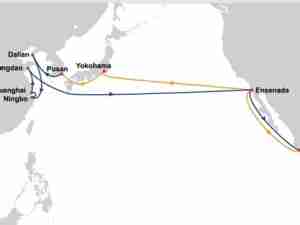Member shipping lines in the Westbound Transpacific Stabilization Agreement (WTSA) have announced a schedule of recommended quarterly increases in their bunker fuel surcharges, aimed at restoring their existing bunker fuel surcharges to guideline levels that more accurately reflect rising marine fuel costs.
In February, WTSA members announced a guideline minimum bunker surcharge of US$200 per 40-foot container (feu) for wastepaper and $300 per feu for agricultural products, chemicals, clay, forest products, hay, metal scrap, plastic scrap and freight-all-kinds (FAK) mixed container shipments, effective April 1, 2008. Customers already paying an equivalent or higher surcharge will not be affected.
Effective July 1, 2008, WTSA lines intend to raise their bunker surcharges across the board to $600 per feu, or the full formula surcharge level in effect at that time, whichever is lower. Effective October 1, the surcharge levels will be raised to $900 per feu or the full formula surcharge level, whichever is lower. By January 1, 2009, lines say they expect all tariff and contract cargo to move under the full, floating bunker surcharge per formula.
'WTSA members have had bunker fuel surcharges in place for some time, based on an established formula that tracks fuel prices,' explained WTSA executive administrator Brian M. Conrad. 'They have been recovering only a fraction of those costs for a period of years, and they have now adopted a program to incrementally raise surcharges from the levels now paid to the full level.' Conrad stressed that the increase amounts are not a departure from the existing WTSA guideline surcharge calculation formula, but rather an attempt to bring surcharge levels, where contract terms permit, closer in line with the formula. He added that surcharges are being increased in stages to make the increases easier for shippers to absorb.
WTSA's surcharge formula is not intended to recover carriers' entire fuel costs but rather to address fuel price fluctuations that can add significantly to transpacific operating costs. Fuel today accounts for half or more of total fixed operating cost per transpacific sailing. Bunker fuel prices in the transpacific market have increased from $198 per metric ton at the beginning of 2005, to $295 at the beginning of 2007, to $530 per ton in mid-March 2008. Shipping lines have long argued for the need for a full, floating bunker surcharge broken out from base rates and adjusted monthly, to enable carriers to quickly recover cost increases quickly and return savings to customers quickly in the event fuel prices fall. That has become critical given the volatility in fuel prices seen over the past year and a half.





